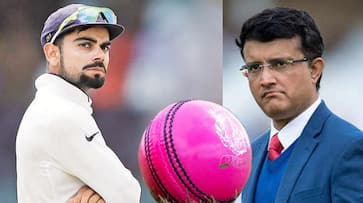India need more time to acclimatise to pink-ball cricket. The BCCI has to provide at least 20 pink balls to the teams for practice and matches. So it is highly unlikely that Bangladesh will accept India’s invitation for a day-nighter
Bengaluru: The new president of the BCCI Sourav Ganguly is enthusiastic about converting the second Test match (November 22) between India and Bangladesh into a day-nighter.
India captain Virat Kohli too has reportedly consented to it. But sans sufficient practice, is it a viable option?
Though the pink ball was used in three seasons of the Duleep Trophy format, players were not impressed. The dew factor played a major role while the players found it difficult to acclimatise to the Kookaburra balls while they were accustomed to playing with SG balls.
Says Vedam Jaishankar, a senior cricket journalist: “The pink ball has to be used more at the domestic levels. The extra grass on the pitch protects the colour on the ball and the swing is maximised. It is to be noted that the pink ball swings excessively. There are high chances that the matches get over in fewer than 3 days. Moreover SG balls are used at domestic levels. The transition to Kookaburra balls is difficult.”
Pink has been specifically chosen because it can withstand dirt. White and red balls accumulate dirt quickly and become an issue for sighting.
Shyam Ponnappa, a former Karnataka Ranji cricketer adds, “The red balls get discoloured easily. It becomes an issue for sighting. But the pink colour sustains itself and that is the reason why it has been chosen.”
But the science apart, the real reason for transition to day/night tests is to draw more crowds.
In fact, India cricketer Dinesh Karthik had concurred with this idea once.
The Karnataka Premier League too was once played using the pink ball and it was fairly successful.
Coming back to the issue of India-Bangladesh day-nighter, the BCCI needs more than 20 new balls to give to the teams for various purposes like practice. Presently, it looks highly unlikely that a day-nighter will take place.
Last Updated Oct 29, 2019, 12:26 PM IST









![Salman Khan sets stage on fire for Anant Ambani, Radhika Merchant pre-wedding festivities [WATCH] ATG](https://static-gi.asianetnews.com/images/01hr1hh8y86gvb4kbqgnyhc0w0/whatsapp-image-2024-03-03-at-12-24-37-pm_100x60xt.jpg)
![Pregnant Deepika Padukone dances with Ranveer Singh at Anant Ambani, Radhika Merchant pre-wedding bash [WATCH] ATG](https://static-gi.asianetnews.com/images/01hr1ffyd3nzqzgm6ba0k87vr8/whatsapp-image-2024-03-03-at-11-45-35-am_100x60xt.jpg)


